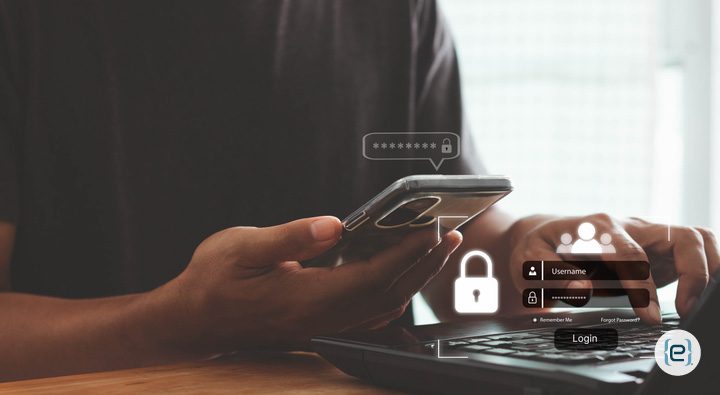The number of digital breaches is rapidly rising, so it is more important than ever to protect our online identities. Multi-Factor Authentication (MFA) is one of the best ways to safeguard our digital assets). But why is MFA such a big deal?
To confirm a user’s identity for a login or other transaction, multi-factor authentication employs multiple methods from separate categories of credentials. It integrates two or more separate forms of identification, such as the user’s identity (biometric verification), possessions (security token), and knowledge (password).
- Increased Security: MFA is important, primarily because it makes your online accounts much more secure. Requiring several forms of identification before allowing access makes it much more difficult for unauthorized individuals to interact with your data. They would still require your second factor — something you have or are — to access your account, even if they managed to crack your password.
- Phishing attack protection: Phishing, or impersonation, attacks are getting more complex and can fool a lot of users into disclosing their passwords. But MFA can still shield you, even if you unintentionally fall victim to a phishing attack and reveal your password. This is because an attacker is still unable to access your account without your second factor.
- Adherence to Regulations: A lot of sectors have rules stipulating specific standards for data security. Businesses can avoid potential fines and penalties by using MFA to help them comply with these regulations.
- Peace of Mind: You can rest easy knowing that MFA is protecting your accounts, since your data is secure even in the unlikely event that your password falls into the wrong hands.
Setting up MFA
Depending on the platform or service you’re using, there are different ways to enable multi-factor authentication). For a few popular platforms, these are the general procedures:
Microsoft 365:
- Sign in to the Microsoft 365 admin center as a Security Administrator.
- Browse to Identity > Overview > Properties.
- Select Manage security defaults.
- Set Security defaults to Enabled.
- Select Save.

Microsoft Authenticator App:
- Sign in to your work or school account and then go to your My Account portal.
- Select Security info in the left menu or by using the link in the Security info pane.
- If you have already registered, you’ll be prompted for two-factor verification.
- Then, select the Add method in the Security info pane.
- On the Add a method page, select Authenticator app from the list, and then select Add.
Using the Microsoft Authenticator app, which is available for free, is one simple and safe method to log into your online accounts using multi-factor authentication, password-less login, or password autofills. The Microsoft Authenticator app has the following important features:
- Multi-Factor Authentication): An additional security layer is offered by the app. After entering your password and confirming that it’s indeed you, you will be prompted for another form of identification when logging in with MFA. Enter the one-time password that the app generated or accept the notification that was sent to the Microsoft Authenticator.
- No password: Access your Microsoft account using your phone number instead of your password. To approve the notification sent to your phone, simply enter your username. This two-step verification process will add a layer of security using your fingerprint, face ID, or PIN.
- Autofill Passwords: You can also have passwords automatically filled in by using the Microsoft Authenticator app. To begin syncing passwords, including those stored in Microsoft Edge, log in to the Authenticator app’s Passwords tab using your personal Microsoft account.
- Accounts other than Microsoft: You can incorporate a variety of accounts such as those from Facebook, Amazon, Dropbox, Google, LinkedIn, GitHub, and more into your app.
- Microsoft Personal, Work, or School Accounts: Microsoft Authenticator installation may occasionally be required by your place of employment or education to access files, emails, or applications. To use the app, you must register your device with your company and link it to your work or educational account.
You can download the Microsoft Authenticator app on iOS1 and Android. The application is compatible with both tablets and smartphones1.
What is Password-less authentication and what are its benefits?
An alternative to using a traditional password to verify a user’s identity is password-less authentication. This method authenticates a user by using other forms of evidence instead of a password. Here are some key aspects of password-less authentication:
- Password-less authentication methods: The most popular ones involve confirming the ownership of a user’s secondary device or account or using a biometric characteristic that is specific to them, such as their fingerprint or face.
- Enhanced Security: Organizations can lower security risks by implementing password-less authentication. Over 84% of all data breaches are caused by credential vulnerabilities, according to Verizon’s 2021 Data Breach Investigations Report (DBIR). Removing passwords can greatly lower the risk of data breaches.
- Lower Expenses: An individual with 100 passwords to memorize needs to spend 12.6 minutes each week changing them. Organizations wind up paying more for password resets and customer service time because of this.
- Improved User Experience: Organizations and their users may have a more seamless experience with password-less authentication, compared to traditional username and password authentication.
- The future of authentication: Sam Srinivas, director of product management at Google Cloud, notes that the use of password-less authentication is expected to increase in the near future.
As cyber threats continue to evolve, we must utilize multiple resources to safeguard our digital lives. MFA offers a practical and easy-to-use solution for enhancing the security of your online accounts, so if you haven’t already using MFA, it’s time to start. MFA and password-less accounts are modern and safe ways to confirm a user’s identity. They reduce expenses, boost user experience, and strengthen security. Trained eMazzanti professionals can help you implement these valuable safety protocols.







